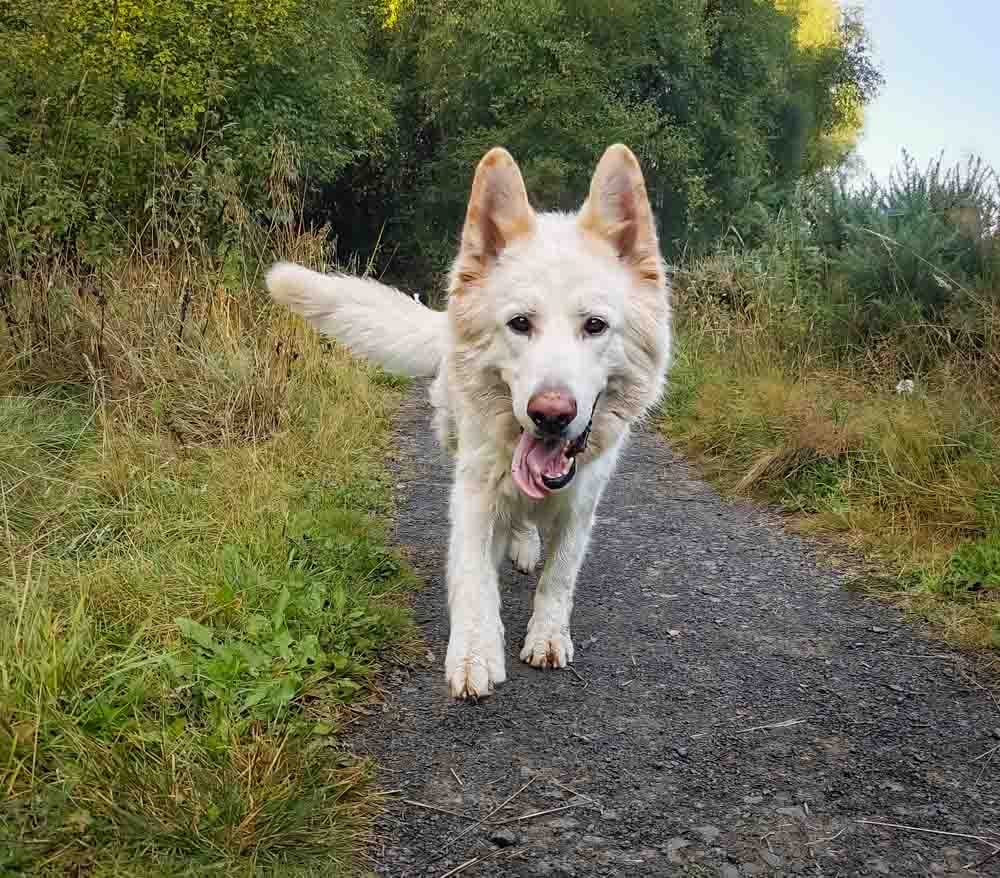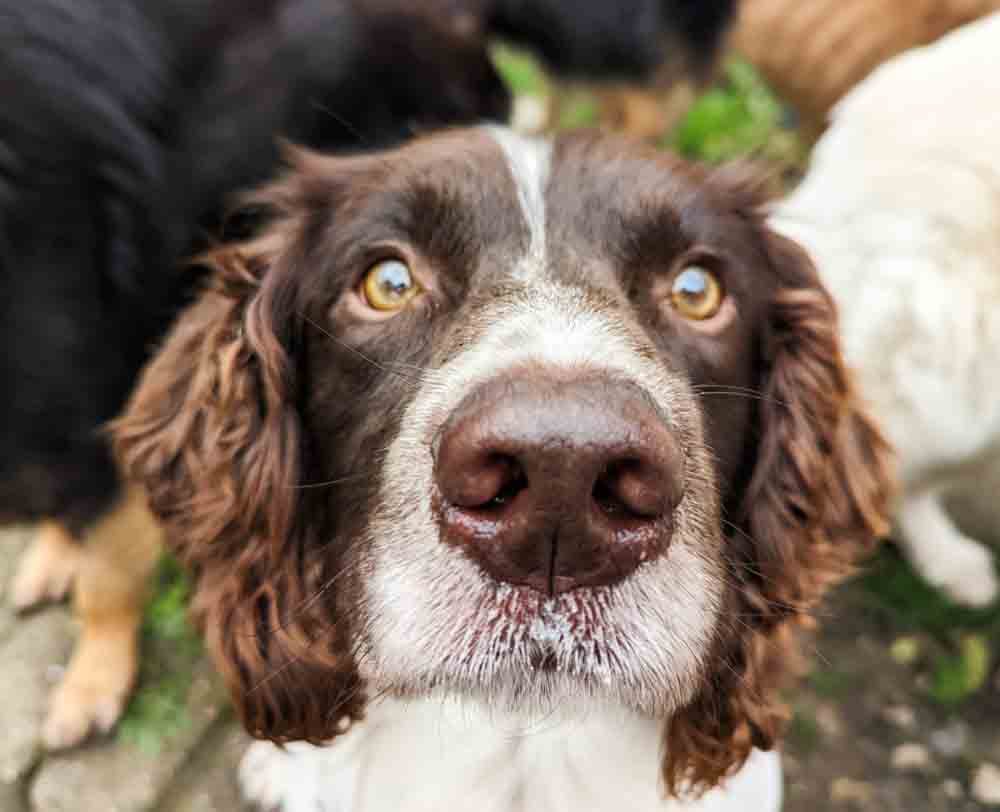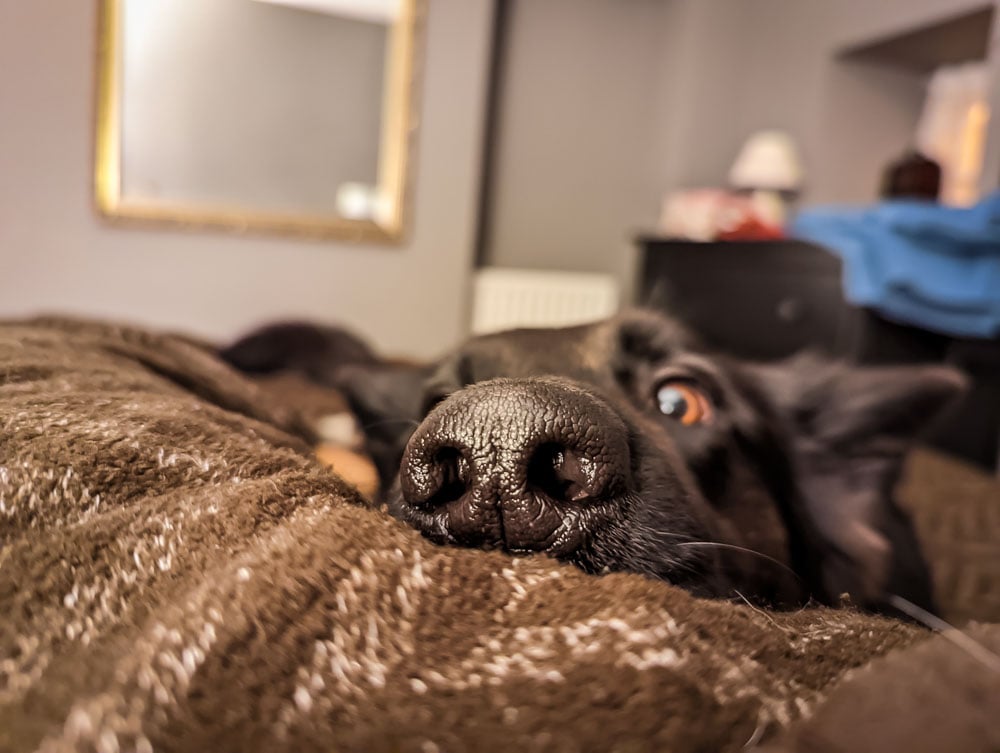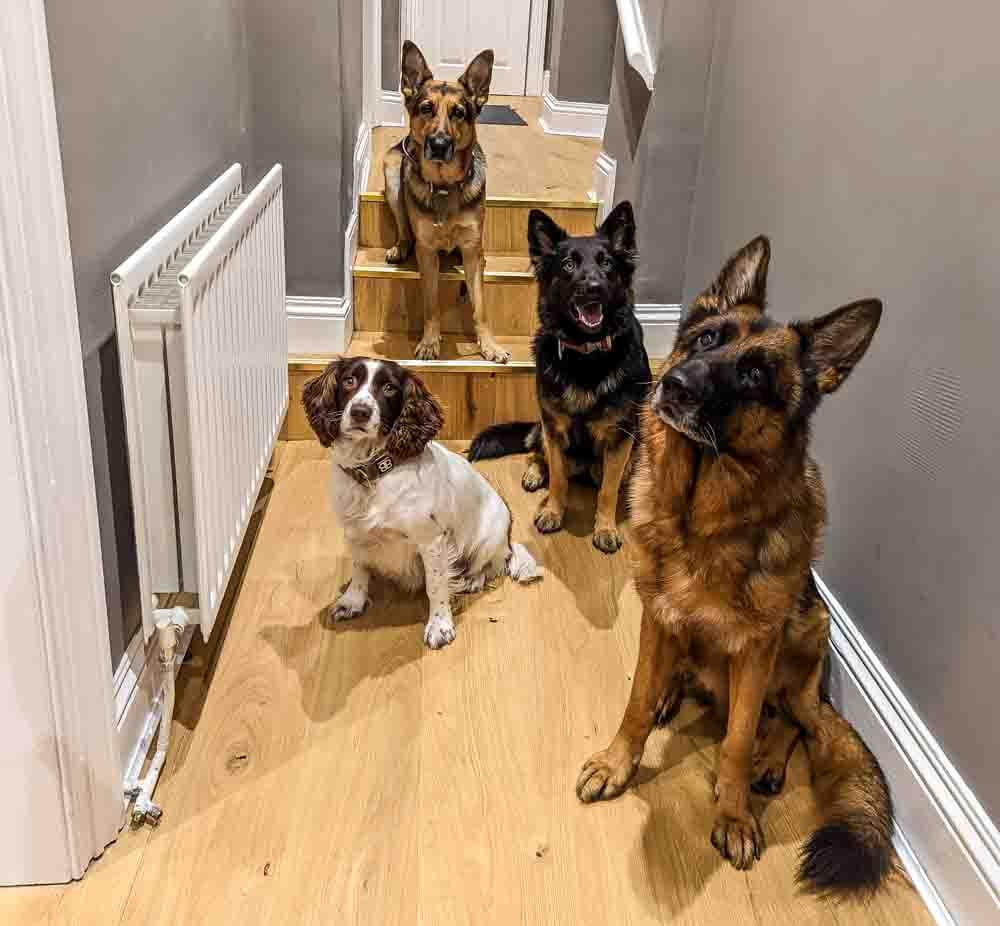Taking dogs on holiday can be amazing. It can enhance your adventure and help make even more memories.
I absolutely love bringing my dogs with me when I am away teaching. They get to see, sniff and run in different places across the UK. Plus I get a companion to share the memories with.
I still travel with my two legged family, but the four legged ones especially love my work trips teaching mantrailing.

To make journeys smoother and maximise the adventure, there is training I do with every one of my dogs to make sure they are happy and calm no matter how far we travel.
You can’t expect a dog to suddenly be comfortable being in the vehicle for long periods of time, or settling in a pub or hotel room, if you haven’t trained them to cope with that.
Teaching the Basics
Like any training you need to reinforce the basics in an environment the dog is comfortable is in, such as the home. My first step is always to teach them to settle in the vehicle.
I travel in my camper van or pickup truck. They have different layouts for the dogs, and they need to be ok with settling even if I am not in the vehicle with them.

Training a dog to settle in a vehicle starts with meal times. I feed all my dogs their meals in a stationary car, in a crate, and build up the time they are left between the meal and getting let out.
Then I start to put them in there and leave them for awhile before feeding them and delaying the exit again. Over time I switch the meal out for a chew, and then nothing at all.
The delay time is so they learn to settle in there without me. The key is for your dog to be able to happy without you around.
Unlike crate training in the home, where you can shut the door and go into another room, in the car when driving you are either there or not there. The training is harder as it’s very black and white to the dog.
So building up the duration of alone time in the car, while giving the dog something good to look forward to is a great way to help them get used to being in the vehicle.

Make a Plan
In August we travelled to Scotland and Devon for over two weeks of work. This meant long journeys for the dogs with a reward of excellent walks.
We’ve previously traveled to all corners of the UK, and my travel companions consist of my merry band of German Shepherds, Springer Spaniels, a Malinois, and my newest addition: a Bavarian Mountain Hound.
I tend to travel in the converted van or the pickup truck, bringing a mixture of dogs each time. Minimum of 1, maximum of 8!
Where I’m going and what I’m teaching dictate whether I’ll camp somewhere, stay at a hotel or AirBnB, or live for a bit in a friend’s driveway.
Either way, an adventure needs planning to accommodate the dogs’ comfort. This includes thinking about food, weather and the appropriate gear, and making stops along the way.

Travel Training
Most of the stops we made were at service stations for a quick loo and coffee break. This is a daunting place for many dogs, and it’s important that you make sure your dog isn’t going to jump out of the car and escape when you stop.
If a dog bolts they are often in immediate danger from other cars in the car park and the proximity to the motorway.
Teaching a good “wait” command means that you dog waits for you to call them out of the crate or vehicle, rather than launching themselves out at the first sign of the door cracking open.
Another good tip is to make sure the dogs are travelling with a collar on, along with a tag containing your details (which is the law, by the way). As long as you dog doesn’t chew, you can also keep their lead on at all times. This means you have something easy to grab in an emergency.
If you travel alone, like I do, it is important that the dogs can settle in the vehicle while I go into buildings to get food or pay for fuel. It can be distressing for everyone to have a dog barking or crying when you go out of sight. This is where the settling training comes in handy, and why it’s such an important step towards a pleasant journey.
Another thing you plan for: all sorts of weather. If your dogs have to stay in the vehicle, you need to be ready for the heat with reflection sheets and fans, or for the cold with blankets, jumpers and even a heater.
I also adore my dogs’ drying coats. With longer coated German Shepherds and water magnet Springer Spaniels, they help wick away the wet and ensure the dogs dry faster. They are a must have for travelling, especially as they can also be used to help cool dogs quickly, acting as a wet blanket to lie on.
And don’t get caught out yourself when away. I keep spare towels for all of us in the vehicle, as well as bedding in the van in case the weather is terrible. We can always snuggle down together, which isn’t such an awful thing.
Don’t forget the sunscreen either. I admit, I got caught unaware and burnt a bit on my last trip. Whoops!

The Set Up
As a rule, I tend to crate my dogs in vehicles. This ensures the dogs are safe, secure, and separated from each other. It also makes them much easier to train. But it’s not everyone’s cup of tea, and others don’t have the space.
I personally find crates mean all the hair stays in one place, the dogs can have chews with them, and if there is an accident from a puppy its contained to one area.
What ever you decide, make sure the dog is happy to travel that way, and that they aren’t a distraction for you driving.
As I have a large pack of dogs, they all travel individually to give each other space, which they all enjoy.

Staying in Accommodations
Though many places say they are dog friendly, they are often dog tolerant and this can make things difficult. I often travel with 2 or more dogs and people do get worried my dogs might take over a whole campsite or ruin an Airbnb.
When they see a lass like me turn up with some large German Shepherds, I can forgive them for panicking a little bit. Luckily Titan tends to have them round his paw in seconds.
Checking to ensure your place is truly dog friendly can take a bit of digging. Make sure, for example, that they have a dog walking area or recommend local dog walks.

Having restrictions on the number of dogs per vehicle is normal at camp sites, but can be a hindrance. This can be even more restrictive in hotels or airbnbs as it means more cleaning when you depart. So don’t be surprised if you find extra cleaning fees on your bill, or if a host asks you to use your own bedding (which actually I prefer).
My top tip when camping is to plan to be at the campsite for the least amount of time necessary and, instead, to explore the area. If the location isn’t as dog friendly as you’d envisioned then you can at least head out for some adventures.
All it needs to be safe really is a staunch ‘all dogs on lead policy’. Not all dogs want others in their faces, and 90% of fights between dogs happen because a rude dog was off the lead and out of control being “friendly”.
Have Fun
You are going on an adventure together and it should be enjoyable. Plan fun activities such as long walks in the mountains or on the beach.
Even though I am away teaching with the dogs, I always make time to check out the local woods or walking areas. This way the dogs get to check out the local smells and burn away the chaos.
While having a dog can limit some of the places you can visit and explore, it doesn’t mean you can’t have fun.

As the UK becomes more and more dog friendly there are exciting new opportunities to enjoy adventures together. There are even secure adventure parks for hire so your dog alone can enjoy a private place with sensory gardens for them to explore.
The dream of a long dog walk followed by a meal and pint at the pub is not far away at all, no matter where you travel in the UK. All it takes a little planning and the appropriate training to pull off the perfect trip together.
Travelling is more than just the journey; it’s the destination, and expecting your dogs to simply cope with all the change isn’t enough. It’s up to you to prepare them and help them understand what behaviour is acceptable and how to behave to maximise the fun.
You may also like:








